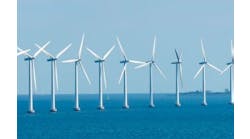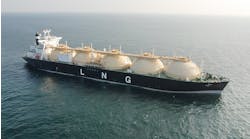FRANCE: French oil groups focusing on production, people, and environmental issues
Jeremy Beckman
Editor, Europe
Dealing with the environment and professional recruitment are two chief concerns of the French oil and gas sector, as the industry tackles the burden of growing energy demands. Raising oil and gas production, while lowering emissions, is a major daunting challenge. The other focuses on attracting the young skilled technicians needed to achieve these goals, as they have been deterred to some degree by the petroleum industry's "less than attractive" image.
A paper by Jean-Francois Giannesini of the Institut Francais du Petrole at IFP's recent Panorama conference in Paris suggested that "green hydrocarbons"may be the way forward. By this, he meant that new techniques would have to emerge as a result of the Kyoto environmental constraints, such as sequestration of carbons via biotechnology or other novel processes. "A big effort will have to be made by the industry to solve this problem," says Victor Vachier, Executive Vice President of the French oil and gas suppliers body, GEP.
Jacques Bouvet, the new GEP Chairman, is of the same opinion, and wants to enlarge GEP's activities on development, marketing, and application of environmentally-correct technologies. An environmental committee of 15 GEP member companies are meeting regularly to discuss these concerns. Schlumberger and Cameron in Beziers are two of the most active members. Vachier hopes this initiative will also attract new types of companies into GEP.
Specific studies
Elsewhere in France, the petroleum and marine studies institute, CEPM, is promoting various studies on carbon dioxide disposal underground, says General Secretary Philippe de Panafieu. "One concerns re-injection of carbon dioxide into calcareous formations, thereby creating carbonates that become trapped for centuries in the rock." Ultimately, however, he believes that providing impetus for such programs should be the concern of governments and oil companies, rather than contractors or supplies.
According to Vachier, "The amount of investment and complexity of these and the other new technologies that will be used to increase hydrocarbon production over the next two decades will require a lot of well-formed people. We want to ensure that our French companies in the offshore business will find good staff to solve all their coming problems. In response, GEP has set up a new Human Resource Comm-ittee, chaired by Francois Souleau. We want to maintain the good educational standards promoted by concerns such as IFP and ENSPM."
Image challenges
"The petroleum industry in France has difficulty recruiting graduate engineers," Panafieu explains. "They tend to prefer e-business when they are thinking about careers. Many of them are more interested in IT (information technology) because of its image. Oil and gas, however, is considered the old economy, even a bit 'dirty,' because of the industry's reputation for doing business with unscrupulous dictators. We have to counterract this by showing that our profession is, in fact, fascinating, exciting, and full of travel opportunities."
Vachier adds: "This means you have to change the image. There is no message in the oil industry today about providing solutions. When people talk of aeronautics, they think of Airbus or Boeing - not Air France or British Airways. Why is it that when the same people discuss oil and gas, they don't talk about the companies that deliver the technologies, but about TotalFinaElf or BP?
"These days, the oil companies even subcontract the writing of specs to contractors. It is not the oil companies that are doing the designs. So, the owner of a deepwater Angolan block is no longer the architect concerning the development of the field. Furthermore, while multinational oil companies are outsourcing, some state-owned companies like NNPC and Sonangol are becoming more involved in the process."
Panafieu points out that when Girassol deepwater architecture issues were under discussion, Sonangol preferred hybrid riser towers because these could be built by the local fabrication yard in Lobito. Coflexip wanted to import flexible risers from France.
Nevertheless, French contractors Doris, Bouygues Offshore, and Stolt Offshore in Paris still benefited from the choice of riser towers, and Doris may do the same if its compliant tower concept is accepted for the Benguela/ Belize development offshore Cabinda (this platform could be built locally, in sections).
Partnership strength
The French service groups retain their strong links with TotalFinaElf, and will continue to benefit as it initiates major new developments offshore West Africa such as Aneman and Akpo off Nigeria, and Dalia off Angola. But they are making progress with other oil companies internationally, partly through collaboration.
Technip and Coflexip have been collaborating since last year as full-service project providers. Bouygues Offshore has formed a new company with Doris in Houston. Bouygues Offshore's Saibos joint venture with Saipem is also making progress in the Gulf of Mexico, with its new deepwater pipelayer FDS, having been selected for the Canyon Express installations.
As individuals, Bouygues Offshore has done preliminary work onshore on Sakhalin 2, which as Panafieu points out, should serve as a springboard into the Russian market. Coflexip maintains its lead as the major pipelay contractor off Brazil, last year winning its biggest ever contract for Roncador.
Offshore Iran, Doris has teamed up with Hyundai to develop the Sowroosh and Nowrooz fields for Shell. The French were already strong in the Persian Gulf through Total's work on Sirri and South Pars. "GEP has been to Iran every year for the past four years," Vachier says, "either attending oil and gas shows in Tehran or organizing seminars for NIOC."


